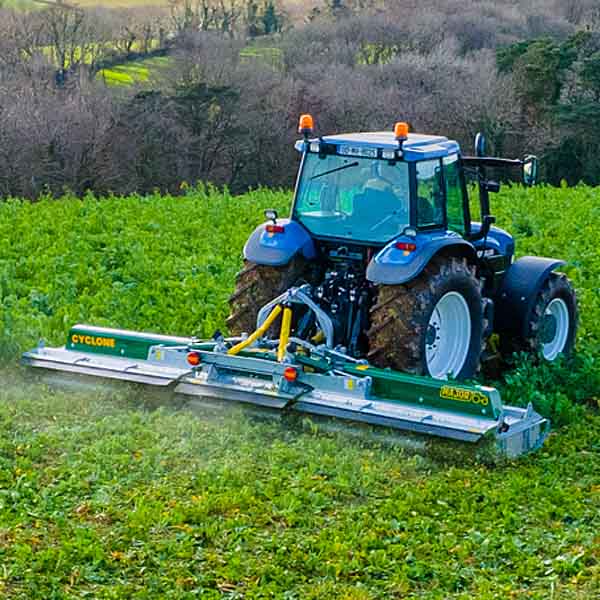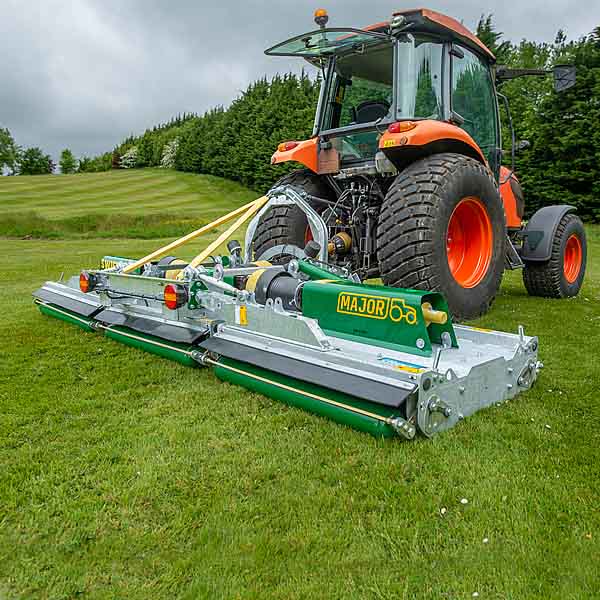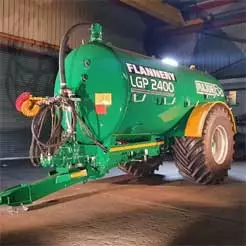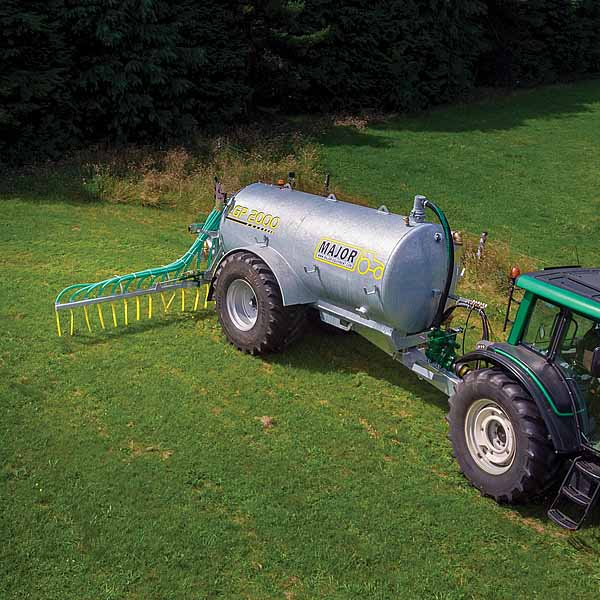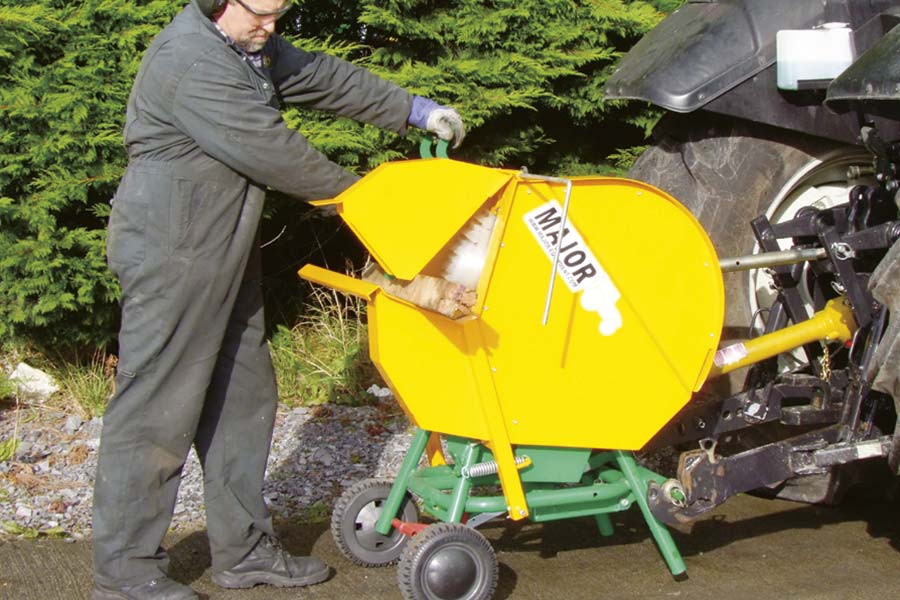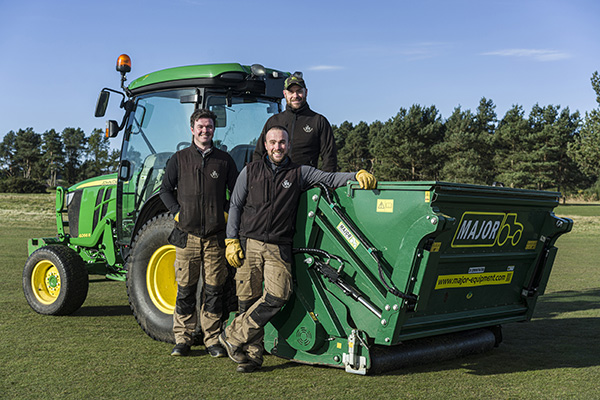
,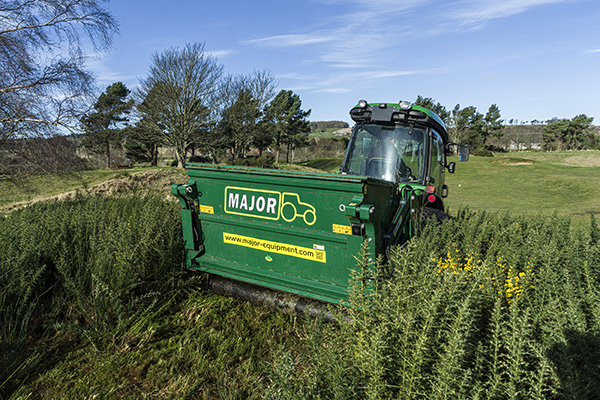
,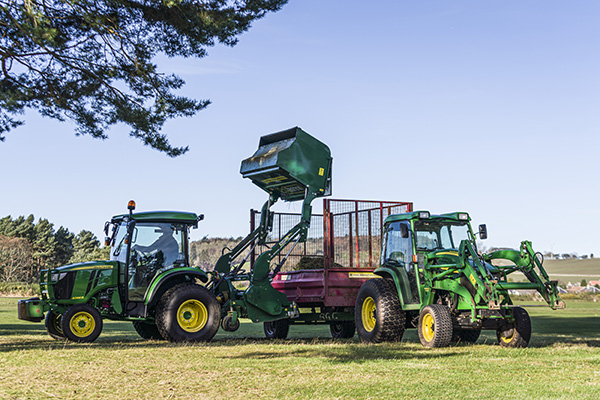
MAJOR Green Bee flail collector keeps gorse and broom growth in check while improving course playability and biodiversity at Scotscraig Golf Course.
Nestled in the heartland of golf between St. Andrews and Carnoustie, Scotscraig Golf Club is a unique course with its mix of heathland and links. Founded in 1817, the championship course is characterised by uneven fairways, thick rough and windswept terrain. It proudly served as an Open Championship Qualifier six times in the last twenty years. It is also the 13th oldest golf course in the world – it celebrated its bicentenary in 2017.
With fewer manufactured elements, the natural setting of links courses requires a particular approach to course management. If not managed carefully, the vast areas of gorse, broom and brush on the 45ha site can slowly creep back and encroach upon the fairways and rough. But Course Manager Chris Barnard has found the solution to fight back the growth. At the same time, more managed rough have been released to enhance the playing enjoyment of the course.
Efficient and effective tool to tackle native rough
“We take a very well organised approach to maintaining and improving our course, which has a lot of pine trees, gorse and broom,” commented Chris Barnard. “There’s around seven to eight hectares of heavily infested rough which we have been working on to bring back into a manageable and more usable status. We use a MAJOR flail collector, which has proven to be absolutely perfect for the task and has brought us additional benefits that we never even considered.”
Three years ago Scotscraig Golf Club purchased a 1.8m MAJOR Green Bee Flail Collector for use with its John Deere compact tractor. It’s a medium-duty flail collector which mows, chops, collects and rolls in one-pass. It also has an optional scarifier unit available for aerating the ground at the same time. Heavy-duty flail blades, chop and pulverise the brush, gorse, grass and heather in a single pass, and throws the material into a 2.2 cubic metre collector which forms an integral part of the machine. When full the collector has a tipping height of 2.2m, suitable for loading onto a trailer or transported to a composting area. The cut-height can be simply adjusted between 12mm and 150mm, depending on the needs of the operator.
Green Bee boosts course playability and beauty
“The reason I decided on the MAJOR Green Bee was because it is really well-built, yet light enough to be fully mounted on our compact tractor,” added Chris. “It also has its own turf tyres on castor wheels and so minimises any wheel marks. Because of the mounted design, it follows the contours of the rough ground without scalping and therefore leaves us with a very manageable finish. By clearing the broom and gorse in one-pass, it leads to quick grass recovery and improves the rough, which is particularly beneficial in some areas, where players used to spend a lot of time looking for wayward balls. Now, it’s much easier and less time consuming for our members.”
With its own integrated rear roller – particularly useful when working on grass fields, pitches and fairways – the Green Bee produces a pleasing striped finish, leaving the grounds in a very professional state. Chris Barnard and his team of three full-time green-keepers use their Green Bee for brush, gorse and heather clearance during October, so the rough can over-winter, and then cross it again in early Spring before the birds start nesting.
“I’m really happy with the way the Green Bee helps us to win the war with gorse and broom growth,” added Chris. “We don’t use herbicides in the rough, rather use mechanical management and let the Green Bee control the rough for us. It’s a very easy machine to set the cut height, it’s very easy to maintain and suits our John Deere compact tractor.”
Eco-friendly approach to improving biodiversity
“One of the big benefits that we did not expect from using the Green Bee was the environmental positives,” Chris continued. “By not using sprays and chemicals, we have seen an obvious increase in wild flowers, insects and wild birds around the course. Last year we counted over forty different species of both resident and visiting birds and that’s a significant improvement on previous counts. The golfing industry always gets a bad reputation when it comes to the environment. Well I can honestly say that we are showing that land management and the environment can work positively, side-by-side and we can all still enjoy the many benefits that nature intended.”

